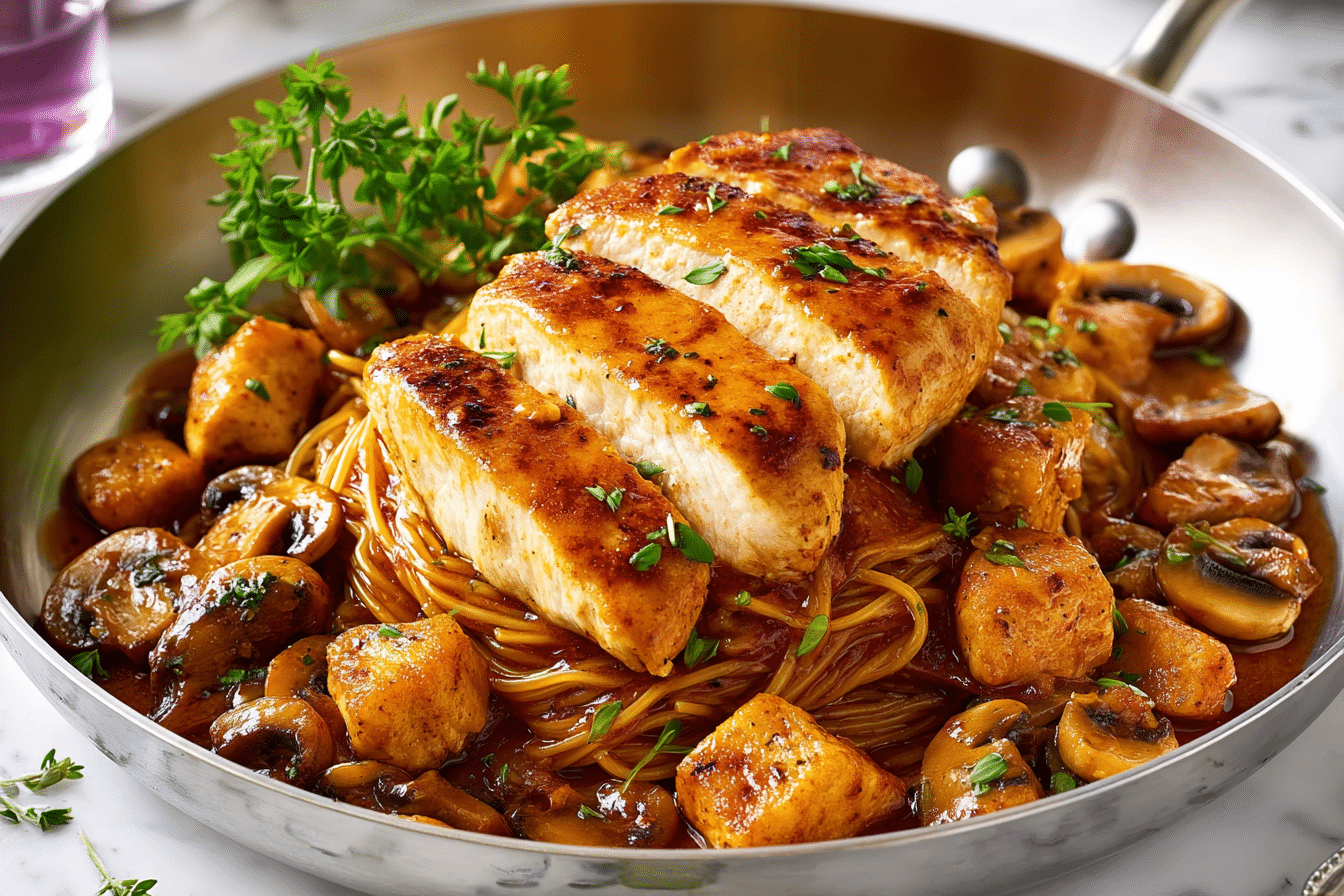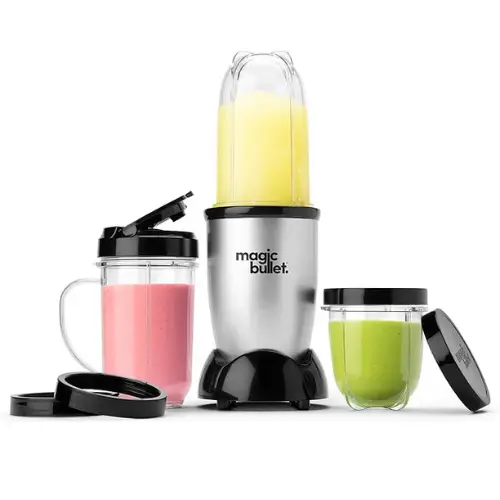Chicken Scallopini is one of those delicious Italian-American classics that feels like it belongs on every family table and restaurant menu. At Cooktune, our passion for food isn’t just about flavor—it’s about connection. From hearty weeknight dinners to special occasions, we bring authentic, easy-to-follow recipes that satisfy. Chicken Scallopini is a prime example of how simple ingredients come together for something extraordinary. In this article, you’ll learn how to make it from scratch, why it’s often confused with dishes like chicken piccata or veal scallopini, and what you can serve it with for a full Italian experience. You’ll also get pro tips, nutritional facts, and flavor variations to suit your palate.
Disclosure: This post contains affiliate links.If you click and make a purchase, I may earn a small commission at no extra cost to you.
Don’t miss our Ultimate Chicken Piccata Recipe for a tangy twist or you Looking for inspiration? Try the creamy and comforting Chicken Mushroom Skillet from CookingFlash or dive into this saucy and irresistible Lemon Garlic Butter Chicken that’s bursting with bold flavors. Ready to cook?
Let’s get started with how to make this flavor-packed dish at home.
Table of Contents
Table of Contents
What Is Chicken Scallopini?
The Origins of Chicken Scallopini
Chicken Scallopini is more than just a tasty meal—it’s a culinary tradition that marries Old World Italian roots with New World innovation. The term “scallopini” (or scaloppine in Italian) refers to thin slices of meat, usually veal or chicken, that are dredged in flour and sautéed quickly to golden perfection. This style of preparation dates back generations in Italy, where meat was pounded thin to stretch portions and reduce cooking time. When Italian immigrants brought their culinary traditions to America, chicken became the go-to choice due to affordability and accessibility, giving rise to what we now call Chicken Scallopini.
This dish is known for its light yet flavorful lemony sauce that pairs beautifully with pasta, vegetables, or even crusty bread. Unlike heavy cream-based meals, Chicken Scallopini strikes a balance—refreshing, buttery, and subtly tangy, thanks to a combination of lemon juice, white wine, and capers. It’s the kind of recipe that delivers gourmet flavor with everyday ingredients.
In American kitchens, it evolved further—sometimes served with mushrooms, sometimes finished with a splash of cream. But the foundation remains the same: thin chicken, fast cooking, and a sauce that sings.
Difference Between Chicken Scallopini and Similar Dishes
If you’ve ever felt confused standing in front of a restaurant menu, staring at chicken piccata, chicken francese, chicken marsala, and chicken scallopini—all on the same page—you’re not alone. They’re cousins in the same flavorful family, but with key distinctions.
Chicken Scallopini vs. Chicken Piccata
Both dishes start with floured, pan-seared chicken cutlets, but piccata takes a sharper turn with an intensely lemon-forward profile. Chicken piccata includes more capers and often skips the wine or tones it down, making it brighter and more acidic. In contrast, Chicken Scallopini has a gentler lemon tone and more butter, resulting in a smoother sauce that doesn’t overpower the chicken.
Chicken Scallopini vs. Chicken Francese
Francese goes for the egg dip before the flour—creating a light, almost tempura-like crust on the chicken. The sauce is similar (lemon-based), but the texture and flavor differ due to the eggy coating. Francese often has a silkier mouthfeel, whereas Scallopini has that delicate, lightly crisp exterior.
Chicken Scallopini vs. Chicken Marsala
This one’s easy—Marsala leans dark and rich with a mushroom and sweet wine sauce. It’s less zesty and more robust than Scallopini. If Scallopini is the bright spring day of Italian cooking, Marsala is a cozy night in front of the fireplace.
Chicken Scallopini vs. Veal Scallopini
Same method, different meat. Veal scallopini is the Italian classic from which chicken scallopini evolved. Veal has a more tender, delicate flavor, but it’s also costlier and less accessible for many home cooks.
What sets chicken scallopini apart isn’t just its ingredients—but its versatility. It’s a dish that adapts to you. Want it tangier? Add more lemon. Crave depth? Use chicken stock instead of water. Need it low-carb? Use almond flour. You get the idea.
Chicken Scallopini’s appeal lies in this balance. It’s not overpowering like piccata, not as rich as marsala, and not as fried as francese. It’s right in the middle—delicate, bright, buttery, and ready for your table.
Print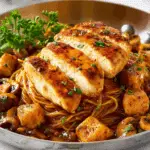
How to Make the Best Chicken Scallopini That’s Tender, Saucy, and Full of Flavor
- Prep Time: 10 minutes
- Cook Time: 20 minutes
- Total Time: 30 minutes
- Yield: 4 servings 1x
- Category: Main Course
- Method: Sauté
- Cuisine: Italian-American
- Diet: Halal
Description
Chicken Scallopini is a classic Italian-American dish featuring thinly pounded chicken breasts sautéed until golden, then simmered in a bright, lemony white wine sauce with capers and fresh herbs. It’s elegant, flavorful, and quick enough for a weeknight dinner.
Ingredients
- 4 boneless, skinless chicken breasts
- 1/2 cup all-purpose flour (for dredging)
- 1/2 tsp salt
- 1/4 tsp black pepper
- 3 tbsp olive oil
- 2 tbsp butter
- 1/2 cup dry white wine
- 1/2 cup chicken broth
- 2 tbsp lemon juice
- 2 tbsp capers (optional)
- 2 tbsp chopped parsley
- 1 lemon, sliced (for garnish)
Instructions
- Place chicken breasts between two sheets of plastic wrap and pound to 1/4-inch thickness.
- In a shallow dish, mix flour, salt, and pepper. Dredge chicken lightly in the flour mixture, shaking off excess.
- Heat olive oil in a large skillet over medium-high heat. Cook chicken for 3–4 minutes per side until golden brown and cooked through. Remove and set aside.
- In the same skillet, add butter and scrape up browned bits. Add white wine and cook for 1 minute to deglaze.
- Add chicken broth, lemon juice, and capers. Simmer for 2–3 minutes until slightly reduced.
- Return chicken to skillet and spoon sauce over the top. Simmer 2 more minutes to warm through.
- Garnish with chopped parsley and lemon slices. Serve hot over pasta, rice, or sautéed vegetables.
Notes
- Use chicken tenders or thighs if preferred.
- Substitute white wine with extra chicken broth if needed.
- Add mushrooms or artichoke hearts for variety.
- Pairs well with angel hair pasta or mashed potatoes.
Nutrition
- Serving Size: 1 chicken breast with sauce
- Calories: 310
- Sugar: 1g
- Sodium: 430mg
- Fat: 16g
- Saturated Fat: 5g
- Unsaturated Fat: 9g
- Trans Fat: 0g
- Carbohydrates: 8g
- Fiber: 0.5g
- Protein: 34g
- Cholesterol: 95mg
Key Ingredients for the Perfect Chicken Scallopini
Why Thin Chicken Breast Cutlets Work Best
The foundation of Chicken Scallopini is its signature thin-sliced chicken cutlets. Why so thin? It’s all about fast, even cooking. When you pound your chicken breasts to about ¼ inch thick, they sear quickly and evenly in the pan, locking in juices without overcooking. The result is a golden crust outside and tender meat inside.
Using thin chicken also means the sauce has more surface area to cling to, making each bite flavorful. This is especially important for dishes like scallopini where the meat isn’t marinated—flavor comes from the technique and sauce.
To get even pieces, either buy pre-sliced chicken breast cutlets or slice regular breasts horizontally and gently pound them flat using a meat mallet or rolling pin. Place them between two sheets of plastic wrap or wax paper to prevent tearing.
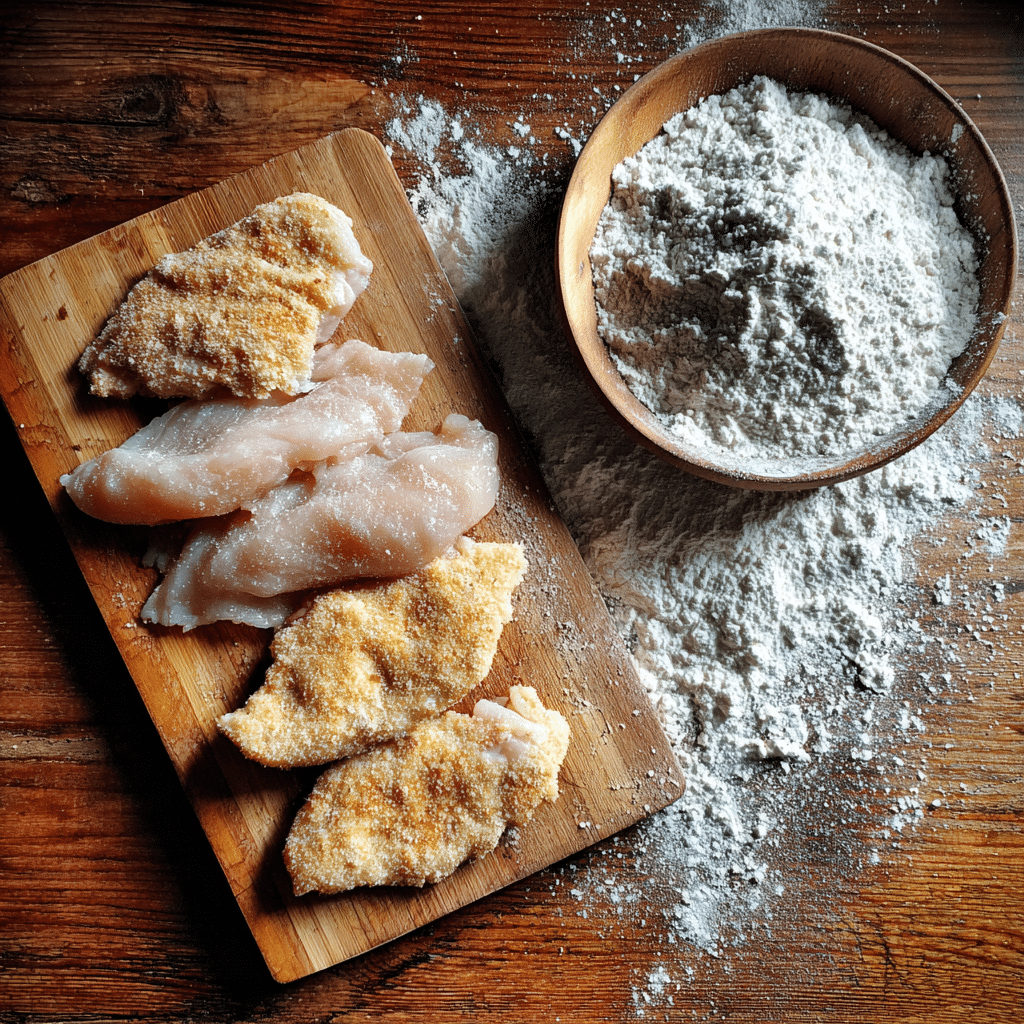
Essential Ingredients That Build Flavor
Chicken Scallopini shines because of its simplicity. Each ingredient plays a crucial role, and there’s little room for extras—so choose quality whenever you can.
1. Salt and Freshly Ground Black Pepper
Before anything else, seasoning your chicken cutlets generously ensures a flavorful bite. Don’t skimp—this is your base layer.
2. All-Purpose Flour
A light dredge in flour creates a delicate crust that helps the sauce cling to the chicken. It also adds a subtle nutty flavor as it browns in the skillet. If you’re going gluten-free, almond or rice flour works too, but expect a slightly different texture.
3. Olive Oil
You’ll need just enough to coat the pan. Choose a good quality extra virgin olive oil for that rich, peppery finish. This is what gives the chicken its golden-brown sear and aroma.
4. Dry White Wine
This deglazes the pan, pulling up all those flavorful bits left after cooking the chicken. A crisp, dry white like Sauvignon Blanc or Pinot Grigio enhances the lemon and capers, without making the dish too sweet or too sour. Don’t use cooking wine—go for the real thing.
5. Fresh Lemon Juice
The soul of the sauce. Fresh lemon juice brings brightness and balances the butter. Bottled juice lacks the vibrancy of fresh lemons, so always squeeze your own.
6. Capers (Drained)
Capers provide a briny, tangy punch that complements the lemon beautifully. They cut through the richness of the butter, creating a well-rounded flavor profile.
7. Cold Butter
Whisked in off-heat, butter finishes the sauce with a glossy texture and smoothness that binds the flavors. Adding it cold helps emulsify the sauce without breaking it.
8. Parsley and Lemon Wedges (for Garnish)
These aren’t just for looks. Fresh parsley adds color and a mild herby touch, while lemon wedges let diners adjust acidity to taste.
Here’s a quick look at the essentials:
| Ingredient | Purpose |
|---|---|
| Chicken cutlets | Main protein, thin for fast, even cooking |
| Flour | Light crust, texture, sauce adhesion |
| Olive oil | Searing, flavor base |
| Dry white wine | Deglazing, depth |
| Lemon juice | Brightness, acidity |
| Capers | Briny contrast |
| Butter | Richness, sauce body |
| Parsley & lemon wedges | Freshness & garnish |
Each of these plays a role in building a sauce that’s silky, vibrant, and unforgettable. When they come together in the pan, they create a flavor profile that’s hard to beat—just enough richness balanced by sharp, clean notes.
How to Cook Chicken Scallopini Step-by-Step
Prepping and Dredging the Chicken Cutlets
The first step to making tender, flavorful Chicken Scallopini is preparing your chicken correctly. This means taking the time to slice and pound your chicken breasts to an even ¼-inch thickness. This ensures a quick cook time and even browning.
Once your cutlets are prepped, it’s time to season. Generously sprinkle both sides with salt and freshly ground black pepper. You want that seasoning to permeate every bite—not just sit on the surface.
Next comes the flour dredge. Lightly coat each cutlet in all-purpose flour, shaking off the excess. Don’t overdo it—a thin dusting is enough. The goal is to form a light crust that helps lock in moisture and gives the sauce something to cling to later. Too much flour, and you’ll end up with a gummy mess instead of golden crispness.
Here’s a quick checklist:
- Pound chicken to ¼-inch thickness
- Season with salt and pepper
- Lightly dredge in flour
- Shake off excess flour
Tip: For best results, let the floured cutlets rest for 5 minutes before cooking. This helps the coating stick better during the sear.
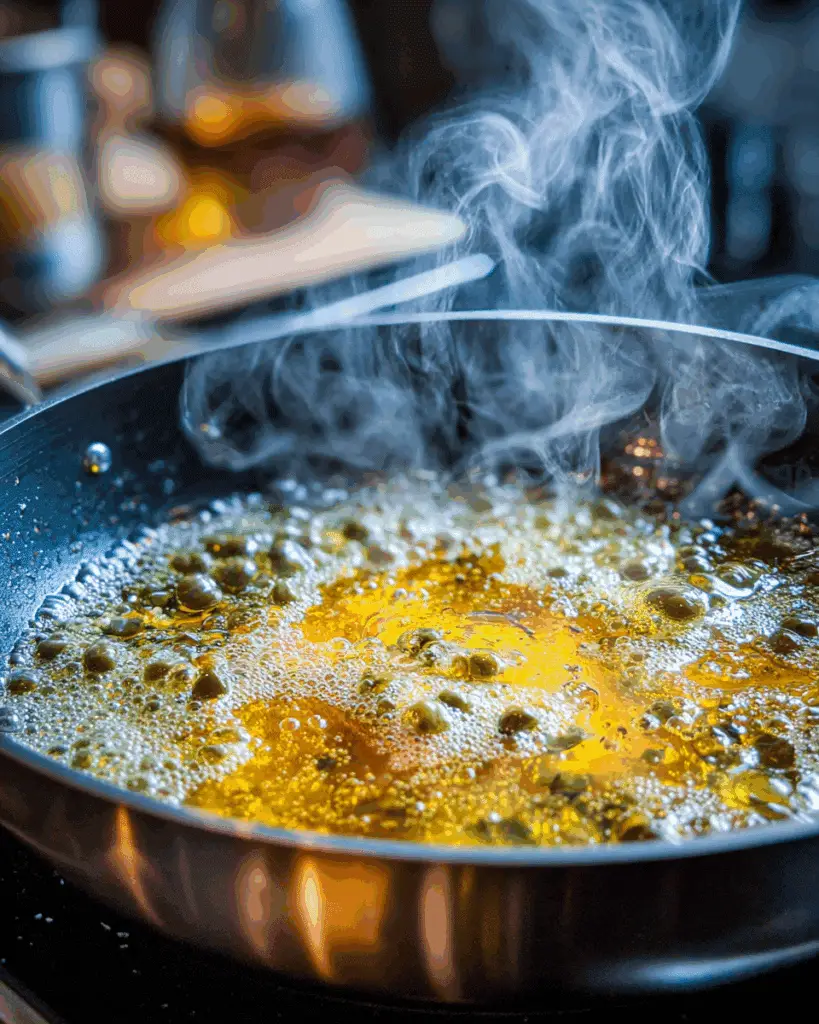
Searing and Building the Lemon-Caper Sauce
Now we’re cooking—literally. Heat 2 tablespoons of olive oil in a large skillet over medium-high heat. When the oil is shimmering (not smoking), add your floured chicken cutlets. Don’t overcrowd the pan—cook in batches if needed. Give each cutlet space so it sears properly and doesn’t steam.
Sear the chicken for about 5 minutes total, flipping halfway through. You want a golden-brown exterior and a cooked-through interior. Once done, transfer the chicken to a plate and loosely tent it with foil to keep it warm.
Without wiping the pan, it’s time to build the sauce. Pour in ½ cup of dry white wine and ¼ cup of fresh lemon juice. As it simmers, use a wooden spoon to scrape up the golden-brown bits stuck to the bottom of the pan. These bits—called fond—are pure flavor gold.
Once the sauce has reduced slightly, remove the pan from heat. Add 2 tablespoons of cold butter, one at a time, whisking until it melts and emulsifies into the sauce. This step is crucial—it creates a smooth, rich finish without making the sauce greasy.
Finally, stir in ¼ cup of drained capers for a briny punch.
Now return the chicken (and any juices from the plate) to the skillet. Swirl or spoon the sauce over the cutlets to coat them completely. Let it simmer together for another minute or so to bring all the flavors together.
Garnish with minced parsley and lemon wedges, and you’re done. The result? A tender, tangy, buttery masterpiece that’s perfect over pasta, potatoes, or just on its own.
Here’s the full cooking flow in one glance:
| Step | Details |
|---|---|
| Heat oil | Medium-high in large skillet |
| Sear chicken | 5 mins, flip halfway |
| Remove chicken | Keep warm under foil |
| Deglaze pan | Add wine and lemon juice |
| Scrape & simmer | Release fond, reduce sauce |
| Whisk in butter | Off heat, add cold butter |
| Stir in capers | Mix for briny flavor |
| Return chicken | Coat in sauce, finish with garnish |
By the time you plate your chicken scallopini, your kitchen will smell like a five-star trattoria. Every step—from pounding the chicken to whisking in cold butter—serves a purpose. Follow the rhythm, and you’ll master it in no time.
Chicken Scallopini Recipe (Full Instructions and Notes)
Exact Ingredients for Perfect Results
To get that signature bright, buttery, lemon-forward flavor of authentic Chicken Scallopini, you don’t need a long grocery list—just a handful of quality ingredients used the right way. Here’s what you’ll need:
| Ingredient | Amount | Notes |
|---|---|---|
| Chicken breast cutlets | 8 (3 oz each) | Pounded thin to ¼ inch |
| Salt | To taste | Season both sides |
| Ground black pepper | To taste | Fresh is best |
| All-purpose flour | ½ cup | For light dredging |
| Olive oil | 2 tbsp | Extra virgin preferred |
| Dry white wine | ½ cup | Sauvignon Blanc or Pinot Grigio |
| Lemon juice | ¼ cup | Always use fresh lemons |
| Capers | ¼ cup | Drained and rinsed if salty |
| Butter | 2 tbsp | Cold, for sauce emulsification |
| Fresh parsley | Minced, for garnish | Optional but recommended |
| Lemon wedges | For serving | Adds brightness and presentation |
Cooking Instructions
1. Prepare the Chicken
Pat the chicken cutlets dry with paper towels. This helps the flour stick and ensures a crisp, even sear. Season both sides with salt and pepper.
2. Dredge and Rest
Lightly dredge each cutlet in flour, shaking off any excess. Lay them on a plate and let them rest for 5 minutes while you heat the oil.
3. Sear to Golden Perfection
In a large skillet, heat olive oil over medium-high heat until shimmering. Add the chicken in a single layer (work in batches if needed). Cook about 5 minutes, flipping once, until golden brown and cooked through. Remove chicken and tent with foil.
4. Deglaze and Build the Sauce
Add wine and lemon juice to the skillet. Scrape up all the golden bits from the pan—that’s where the flavor lives! Let it reduce slightly (about 2–3 minutes).
5. Add Butter and Capers
Take the pan off the heat and whisk in the cold butter one tablespoon at a time. Then stir in the drained capers.
6. Return Chicken and Coat
Return the seared chicken (and any juices) to the pan. Swirl gently or spoon sauce over each piece. Simmer for one more minute.
7. Garnish and Serve
Transfer to a plate, sprinkle with fresh parsley, and serve with lemon wedges on the side.
Pro Tips & Chef Notes
- No wine? Use low-sodium chicken broth or a splash of apple cider vinegar diluted with water.
- Make it creamy: Add ¼ cup of heavy cream just before whisking in butter for a rich, velvety sauce.
- Low-carb option: Replace all-purpose flour with almond flour or coconut flour.
- Meal prep magic: Chicken Scallopini reheats well in a skillet with a splash of broth—don’t microwave unless absolutely necessary.
Quick Recap Table
| Step | Action |
|---|---|
| 1 | Dry & season chicken |
| 2 | Dredge lightly in flour |
| 3 | Sear until golden |
| 4 | Deglaze with wine & lemon |
| 5 | Add butter + capers |
| 6 | Return chicken & coat |
| 7 | Garnish & serve |
Chicken Scallopini is fast, flexible, and foolproof when you follow this sequence. Whether it’s a casual weeknight or dinner for guests, this recipe brings elegance with minimal effort.
Creative Variations of Chicken Scallopini You Need to Try
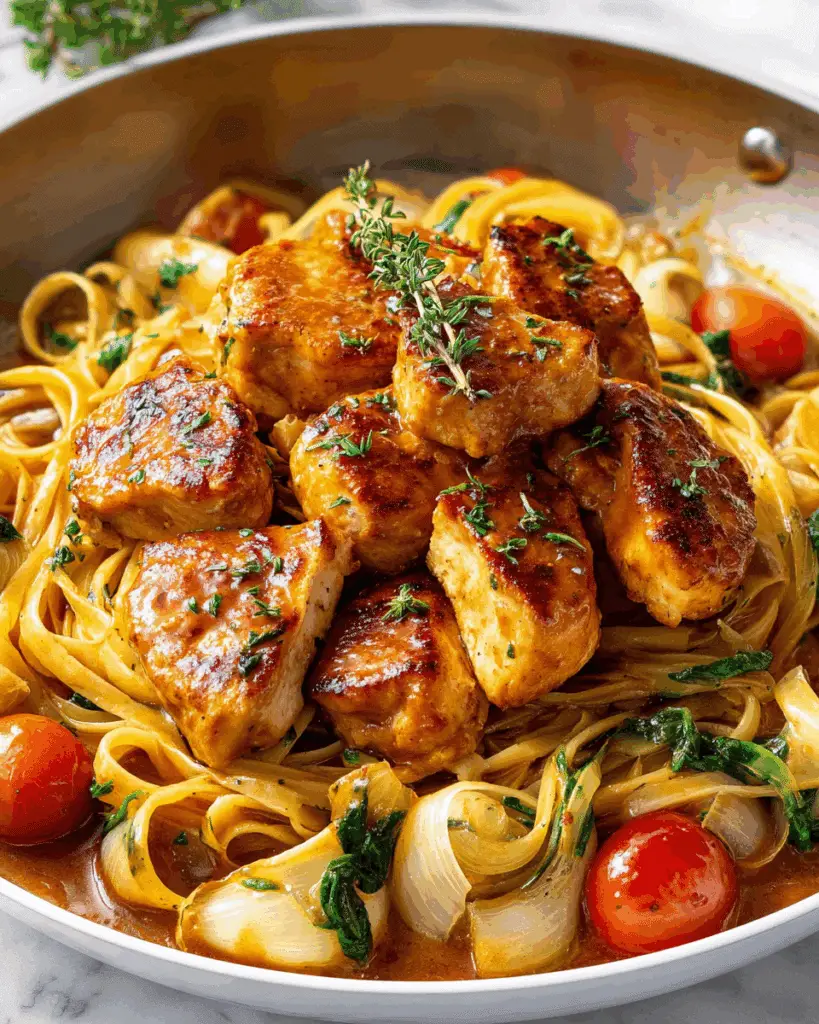
Elevate It: Veal Scallopini – A Classic Reimagined
If you think Chicken Scallopini is the peak of easy elegance, wait until you try it with veal. Veal Scallopini is the upscale Italian version that originally inspired the chicken adaptation. It’s refined, tender, and surprisingly quick to cook—making it a dinner party hero.
The technique is the same: pound the meat thin, give it a light flour coating, sear it golden, then finish it in a bright, pan-scraped sauce. What changes with veal is the flavor—it’s smoother, more delicate, and works beautifully with citrus or herb-infused sauces.
Want to impress your guests? Add a few sophisticated twists:
- A splash of orange juice with zest instead of lemon for subtle sweetness.
- A dash of white truffle oil added to the butter finish for earthy depth.
- Swap parsley with tarragon or thyme for an herbal accent.
The richness of veal absorbs the sauce while staying soft and luxurious on the plate. It’s an easy upgrade that instantly makes your meal feel five-star.
Cozy It Up: Creamy Mushroom Chicken Scallopini
Looking for comfort food with a touch of elegance? Turn your Chicken Scallopini into a creamy mushroom dream. This variation keeps the same lemony backbone but adds a silky finish that’s perfect for cool nights or indulgent weekends.
Here’s how you do it:
After searing your chicken, toss in 1½ cups of sliced mushrooms (button, shiitake, or cremini work best). Sauté until golden and all their moisture is released—this builds umami into the base. Deglaze with wine and lemon as usual, then stir in ¼ to ⅓ cup of heavy cream alongside the butter and capers.
Let it simmer gently until the sauce thickens into a velvety coat. The lemon keeps the cream from feeling too heavy, and the mushrooms bring a depth that makes every bite feel gourmet.
Best served over wide noodles, polenta, or even creamy mashed cauliflower if you’re going lighter.
Modern and Bold Takes You’ll Love
Don’t stop at traditional. Chicken Scallopini is versatile enough to carry all sorts of fun and fresh spins. Whether you’re working with dietary restrictions or just looking for something new, here are some inspired twists:
| Style | What to Change | Why Try It |
|---|---|---|
| Lemon Herb Scallopini | Add rosemary, basil, and thyme to the sauce | Brings garden-fresh brightness |
| Scallopini Piccata-Style | Double the lemon, double the capers | Zingy, tangy, and bold |
| Scallopini Alfredo Fusion | Add cream + parmesan cheese | Indulgent, rich, pasta-ready |
| Spicy Garlic Scallopini | Add red pepper flakes & extra garlic | For those who love a kick |
| Vegan Scallopini | Use tofu or eggplant, and plant butter | All the flavor, none of the meat |
You can even mix up your protein. Thin-sliced pork loin, turkey breast, or firm tofu can all be transformed using the same method—pounded thin, lightly dredged, pan-seared, and sauced.
Think of scallopini like a canvas. The method is your brushstroke, and the flavors? All yours to customize. Once you’ve mastered the technique, you’re free to make it spicy, creamy, low-carb, gluten-free, or gourmet—all depending on your pantry and your mood.
So whether you’re cooking for picky eaters, dietary needs, or just shaking things up midweek, these Chicken Scallopini variations offer endless flexibility without losing the charm of the original.
Best Side Dishes to Serve with Chicken Scallopini
Classic Italian Pairings That Never Fail
When it comes to Chicken Scallopini, the sauce is the star. That lemony, buttery glaze deserves a supporting cast that can soak it up, complement it, and elevate the whole experience. That’s where traditional Italian sides come into play—comforting, simple, and totally satisfying.
Pasta is a no-brainer. Angel hair, spaghetti, or fettuccine tossed with a little olive oil and garlic creates a clean, neutral base that lets the scallopini sauce shine. You don’t need a rich Alfredo or heavy tomato pairing here—keep it light to maintain balance.
Then there’s risotto. A creamy lemon risotto or even a classic Parmesan risotto pairs beautifully with scallopini. The creamy texture echoes the sauce’s silkiness, making every forkful a dream.
And let’s not forget garlic bread. Crusty on the outside, pillowy inside, it’s the perfect tool for scooping up extra sauce. No shame in wiping your plate clean with a warm slice.
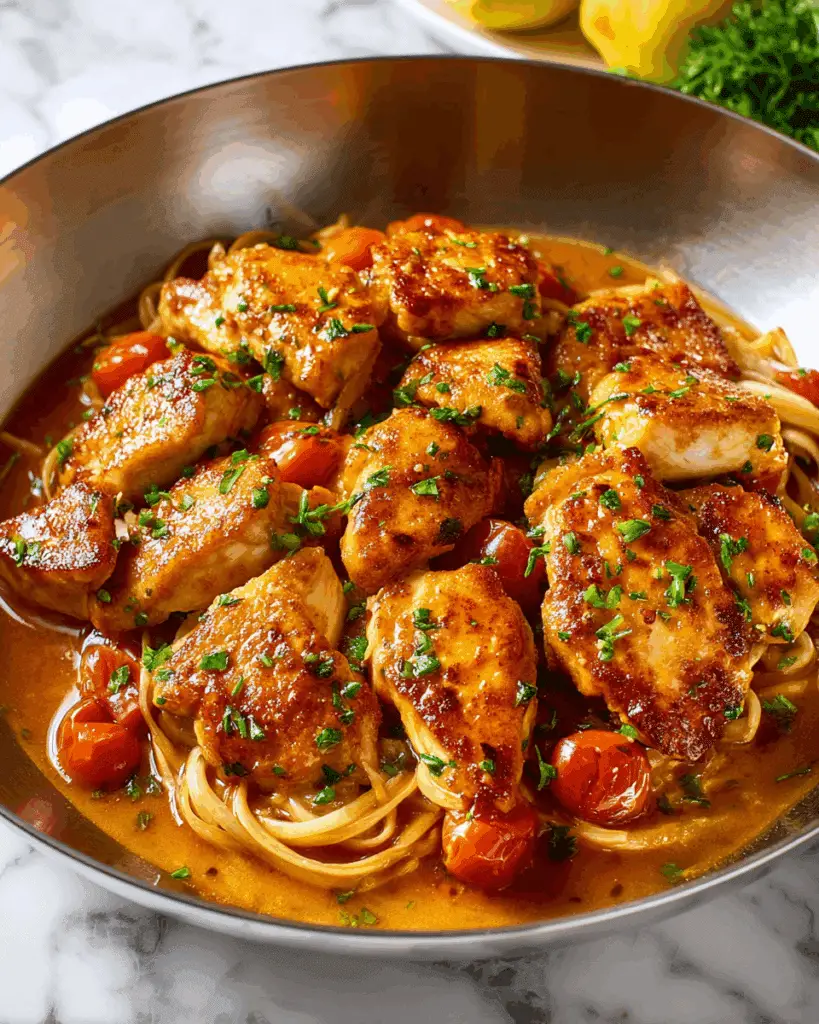
Here’s a quick table of timeless side choices:
| Side Dish | Why It Works |
|---|---|
| Garlic butter pasta | Neutral flavor that absorbs sauce |
| Lemon Parmesan risotto | Echoes the citrus notes in the scallopini |
| Herb roasted potatoes | Crispy texture + earthy balance |
| Sauteed spinach with garlic | Adds color and light bitterness |
| Crusty Italian bread | Soaks up every drop of sauce |
Fresh, Healthy & Modern Alternatives
Looking to keep things light or gluten-free? No problem. Chicken Scallopini is incredibly adaptable to a range of clean-eating or low-carb sides. And the best part? You won’t sacrifice flavor.
Cauliflower rice is a fantastic substitute for pasta or traditional grains. It’s light, fluffy, and absorbs the sauce well—especially if you toss it with a little lemon zest and parsley.
Zucchini noodles (zoodles) are another low-carb option that offers a bit of crunch and a fresh contrast to the buttery sauce.
Quinoa works great, especially when flavored with a splash of olive oil and lemon juice. It’s protein-packed, gluten-free, and adds a nutty bite that’s surprisingly satisfying.
Simple salads—like arugula with shaved Parmesan and a lemon vinaigrette—add a fresh, peppery contrast to the richness of the scallopini.
Here’s a breakdown of clean pairings:
| Modern Side | Benefits |
|---|---|
| Cauliflower rice | Low-carb, light, great sauce absorption |
| Zucchini noodles | Fresh, crisp, low-calorie |
| Quinoa | Gluten-free, protein-packed |
| Arugula salad | Peppery bite, cuts through richness |
| Steamed green beans | Simple and clean, great crunch |
Tips for Perfect Pairing
- If your scallopini is extra lemony, pair it with mild, creamy sides to tone down the acidity.
- When making a creamy variation, choose something crunchy or acidic to balance out the richness.
- If you want a one-dish dinner, toss scallopini with pasta directly and finish with parsley and extra lemon.
Chicken Scallopini is one of those rare dishes that plays nice with just about anything—whether you’re leaning into its Italian roots or trying something new. It can go light, rich, rustic, or refined. Your side dish? That’s your flavor amplifier.
Chicken Scallopini vs. Chicken Piccata vs. Chicken Francese vs. Chicken Marsala
Taste Showdown: Understanding the Flavor Profiles
At a glance, these classic Italian-American chicken dishes might seem like slight variations of the same meal. They all feature thin chicken cutlets, they’re all pan-seared, and they all come bathed in a sauce. But each one brings its own unique twist—and flavor punch—that sets it apart. Let’s break it down.
Chicken Scallopini
- Main Flavor: Balanced buttery-lemon sauce with subtle briny capers
- Texture: Lightly crispy exterior, tender interior
- Sauce Profile: Bright and smooth, not too tangy or heavy
- Best With: Pasta, veggies, or something light to absorb the sauce
This dish strikes harmony—it’s not too acidic, not overly rich, and its simplicity is its elegance. It’s the most flexible of the bunch.
Chicken Piccata
- Main Flavor: Bold lemon and caper tang
- Texture: Light crust, thinner sauce
- Sauce Profile: Sharp, citrus-forward, high-acid
- Best With: Angel hair pasta or crusty bread
Piccata dials the lemon way up. If you love a puckery, citrusy finish, this is your jam. It’s also the closest cousin to scallopini, which is why many confuse the two.
Chicken Francese
- Main Flavor: Mild lemon-butter with a custard-like crust
- Texture: Egg-dipped exterior, soft and rich
- Sauce Profile: Buttery and slightly tangy
- Best With: Mashed potatoes or rice
Here’s the key difference: Francese cutlets are first dipped in flour, then beaten egg—basically the reverse of chicken parm. This gives it a pillowy coating that soaks in sauce like a sponge. It’s richer, more decadent, and oh-so comforting.
Chicken Marsala
- Main Flavor: Earthy, savory mushroom and sweet wine sauce
- Texture: Soft and saucy
- Sauce Profile: Deep, sweet-savory, wine-heavy
- Best With: Creamy pasta, polenta, or risotto
Marsala is the outlier—less lemon, more luxury. It’s defined by its namesake fortified wine and sautéed mushrooms, delivering a dark, warm flavor profile that’s perfect for colder nights or cozy dinners.
Side-by-Side Comparison Table
| Dish | Sauce Base | Main Flavor | Key Difference | Best Served With |
|---|---|---|---|---|
| Scallopini | Wine, lemon, capers, butter | Balanced, buttery, slightly tangy | Simple & smooth | Pasta or veggies |
| Piccata | Lemon, capers, broth | Bright, sharp citrus | Heavy on lemon & capers | Crusty bread, light pasta |
| Francese | Lemon, wine, butter | Rich, buttery with egg coating | Egg-dipped crust | Mashed potatoes or rice |
| Marsala | Marsala wine, mushrooms | Deep, sweet-savory | Uses sweet wine & mushrooms | Creamy sides or polenta |
When to Cook Which?
- Need something bright and light? Go with Chicken Scallopini.
- Craving a zesty kick? Piccata is your go-to.
- Want richness and comfort? Francese hits the mark.
- Looking for bold and earthy? Marsala takes it home.
Knowing the differences means you’ll never second-guess your choice again. Each dish brings its own flavor vibe, and now you’ve got the inside scoop on exactly how they stand apart—and when to serve them.
Storage Tips and Reheating Like a Pro
How to Store Chicken Scallopini Properly
Chicken Scallopini might be easy to make fresh, but it also holds up well if you know how to store it correctly. Whether you’re meal prepping or saving leftovers, proper storage keeps the chicken tender and the sauce just as flavorful.
Start by letting the dish cool to room temperature. Don’t rush it into the fridge hot—it’ll create condensation that can make the cutlets soggy. Once cooled, store the chicken and sauce in an airtight container. If possible, store the chicken and sauce separately to maintain that light crust on the cutlets.
For short-term storage:
- Refrigerate in an airtight container for up to 3–4 days
- Store sauce in a separate small container if you plan to reheat separately
For long-term storage:
- Freeze for up to 2 months
- Wrap each cutlet in parchment, then store in a zip-top freezer bag
- Freeze sauce in a small airtight container or ice cube trays for easy portioning
Reheating Tips That Keep It Moist and Delicious
Now, this is where many people go wrong—don’t microwave your chicken scallopini if you want it to taste fresh. That method can dry out the chicken and make the sauce separate. Instead, use the stovetop or oven for best results.
Stovetop Method (Best for Flavor Retention):
- Heat a skillet over medium-low heat
- Add a splash of chicken broth or white wine to revive the sauce
- Add the sauce first, then nestle in the cutlets
- Cover and heat for 5–7 minutes, spooning sauce over the chicken as it warms
Oven Method (Great for Multiple Servings):
- Preheat oven to 325°F
- Place chicken in a baking dish and pour sauce over the top
- Cover tightly with foil to trap moisture
- Bake for 15–20 minutes until heated through
Microwave Method (Quickest, but Least Recommended):
- Use only for single servings
- Place chicken and sauce in a microwave-safe dish
- Cover loosely and reheat on 50–60% power in 30-second bursts
- Stir the sauce and flip chicken halfway for even heating
Tips to Keep the Texture Right
- Avoid high heat—low and slow is your friend
- Add liquid to keep the sauce from drying out or breaking
- Don’t refreeze once it’s been thawed—it’ll affect the texture
Whether you’re enjoying leftovers tomorrow or pulling from the freezer in two weeks, following these tips ensures your Chicken Scallopini is still juicy, flavorful, and worth every bite.
Nutritional Facts and Healthier Substitutions
Calories and Macronutrients Breakdown
Chicken Scallopini may taste indulgent, but it’s actually a smart choice compared to heavier fried or cream-based dishes. With lean protein, a lemon-based sauce, and minimal flour, it’s a balanced meal that doesn’t rely on excessive fat or carbs for flavor.
Here’s an approximate nutrition profile per serving (based on 1 chicken cutlet + sauce):
| Nutrient | Amount (Approx.) |
|---|---|
| Calories | 370–400 kcal |
| Protein | 27–30g |
| Fat | 20–22g |
| Carbohydrates | 8–10g |
| Sugar | 1–2g |
| Fiber | 0–1g |
| Sodium | 550–650mg |
Keep in mind, sides like pasta or potatoes will add more carbs, while veggies will boost fiber and vitamins. The chicken provides lean protein, and the olive oil and butter add healthy fats—especially if you use high-quality sources.
Lighten It Up Without Losing Flavor
Watching your calories or trying to eat cleaner? You can absolutely enjoy Chicken Scallopini with a few smart swaps—without sacrificing taste or texture.
1. Swap Flour for Almond or Coconut Flour
Cut down on carbs and go gluten-free by dredging your chicken in almond flour or coconut flour. Both create a slightly nutty crust and work well with the lemony sauce.
2. Use Ghee or Light Olive Oil Instead of Butter
Want a dairy-free option or lower saturated fat? Ghee gives you buttery flavor with fewer milk solids, and light olive oil keeps things heart-healthy.
3. Add More Veggies to the Plate
Roasted zucchini, steamed broccoli, or grilled asparagus are nutrient-dense additions that make your plate feel full while keeping calories down.
4. Skip the Pasta
Instead, serve your scallopini over zoodles (zucchini noodles), cauliflower mash, or even spaghetti squash. These swaps still let the sauce shine and cut down on processed carbs.
5. Reduce the Butter
You can drop the butter to 1 tablespoon or skip it altogether by thickening the sauce with a teaspoon of cornstarch mixed in wine or broth. It won’t be quite as silky, but it’ll still be satisfying.
Healthy Versions That Still Taste Amazing
| Swap This | For This | Why |
|---|---|---|
| All-purpose flour | Almond or coconut flour | Lower carbs, gluten-free |
| Regular butter | Ghee or avocado oil | Less dairy, healthier fats |
| Pasta | Cauliflower rice or zucchini noodles | Low-carb, fiber boost |
| Full portion | Half serving + extra veggies | Fewer calories, more balance |
With these modifications, Chicken Scallopini transforms from a rich, date-night dish into a clean, weeknight go-to. You still get all the zesty, buttery, savory flavor—but in a way that fits your goals, whether that’s weight loss, managing macros, or simply feeling good about what you eat.
So go ahead—plate it, pair it, personalize it. Chicken Scallopini isn’t just a recipe, it’s a foundation for dozens of delicious possibilities.
Don’t miss our Ultimate Chicken Piccata Recipe for a tangy twist.
Frequently Asked Questions (FAQs) About Chicken Scallopini
What is the difference between chicken scallopini and chicken piccata?
The difference lies mainly in the sauce. Chicken scallopini has a milder, buttery lemon sauce with optional capers, while chicken piccata is more acidic and intensely citrus-forward, featuring a stronger presence of lemon and capers. Piccata is sharper; scallopini is smoother.
Can I use veal instead of chicken for scallopini?
Yes. In fact, veal is the traditional protein in Italian scallopini. Veal scallopini is more tender and carries a lighter flavor than chicken, making it ideal for more refined or formal meals. Just make sure the slices are thin and quick-cooked like the chicken version.
Is chicken scallopini gluten-free?
Not by default, since it’s usually dredged in all-purpose flour. However, you can easily make it gluten-free by using almond flour, coconut flour, or any gluten-free flour blend. The rest of the ingredients—chicken, wine, lemon, butter, and capers—are naturally gluten-free.
What wine should I use in chicken scallopini?
A dry white wine like Sauvignon Blanc, Pinot Grigio, or Chardonnay (unoaked) works best. Avoid sweet wines—they’ll overpower the lemon and capers. If you prefer to cook without alcohol, substitute chicken broth with a splash of lemon juice instead.
Can I freeze chicken scallopini?
Yes. Cooked scallopini freezes well for up to 2 months. For best results, freeze the chicken and sauce separately. Wrap each cutlet individually in parchment and store in a freezer-safe container. Reheat gently on the stovetop to preserve texture and flavor.
What’s the best way to serve chicken scallopini for guests?
For an elegant presentation, plate the chicken over buttered pasta or lemon risotto, drizzle with sauce, and garnish with chopped parsley and fresh lemon wedges. Pair it with a crisp white wine and a simple green salad to complete the meal.
Chicken Scallopini—Simple, Elegant, and Full of Flavor
Chicken Scallopini is one of those magical dishes that feels fancy but is surprisingly simple to make. With its zesty lemon butter sauce, quick-cooked chicken, and ability to pair with almost anything—from pasta to roasted veggies—it’s a dinner hero in every sense.
Whether you’re keeping it classic or trying creamy mushroom, veal, or gluten-free variations, this dish adapts to your tastes and your table. It’s the kind of meal you can serve at a weekday dinner or a weekend celebration—and it always delivers.

